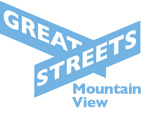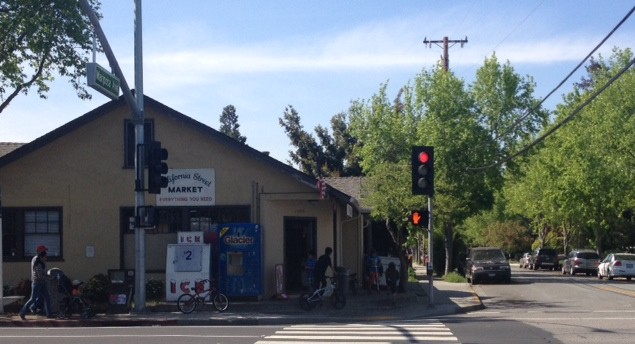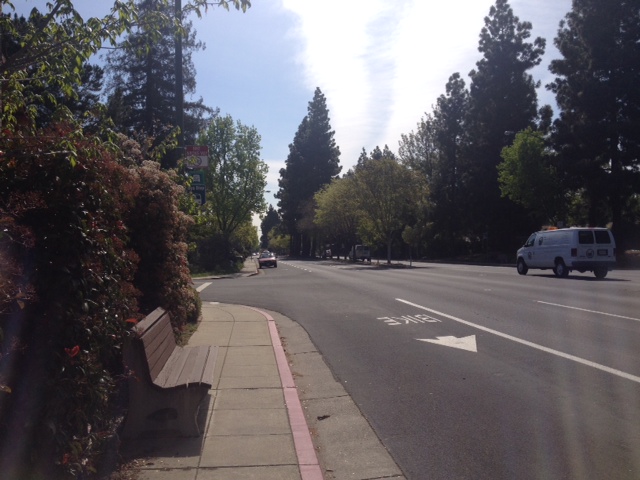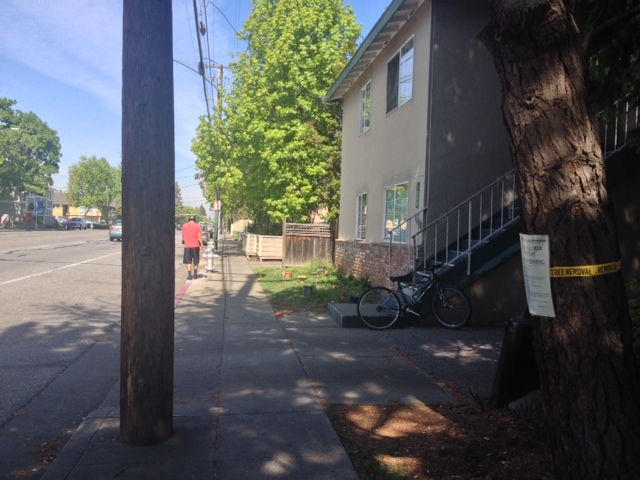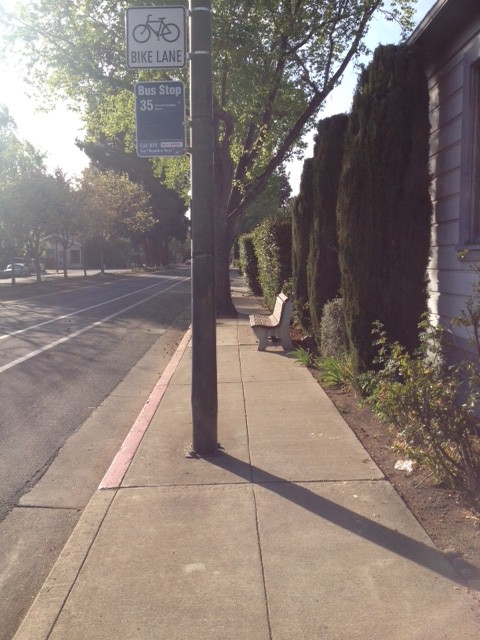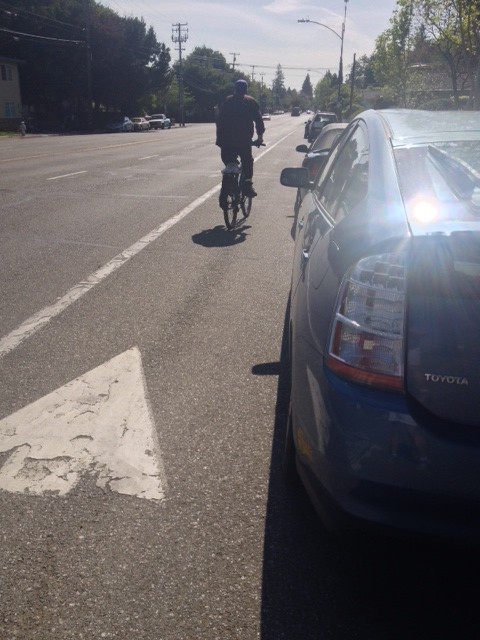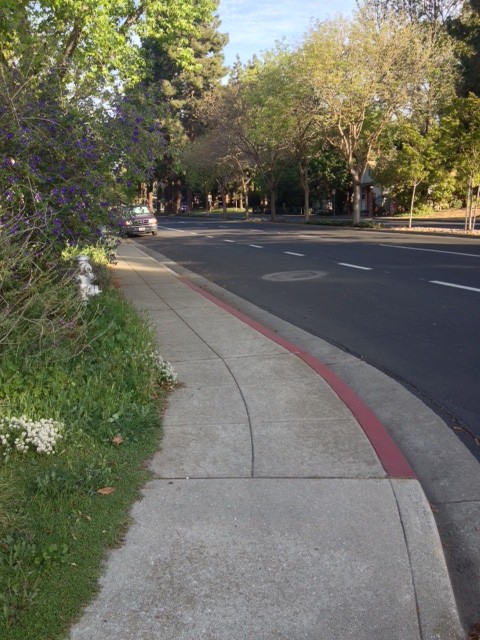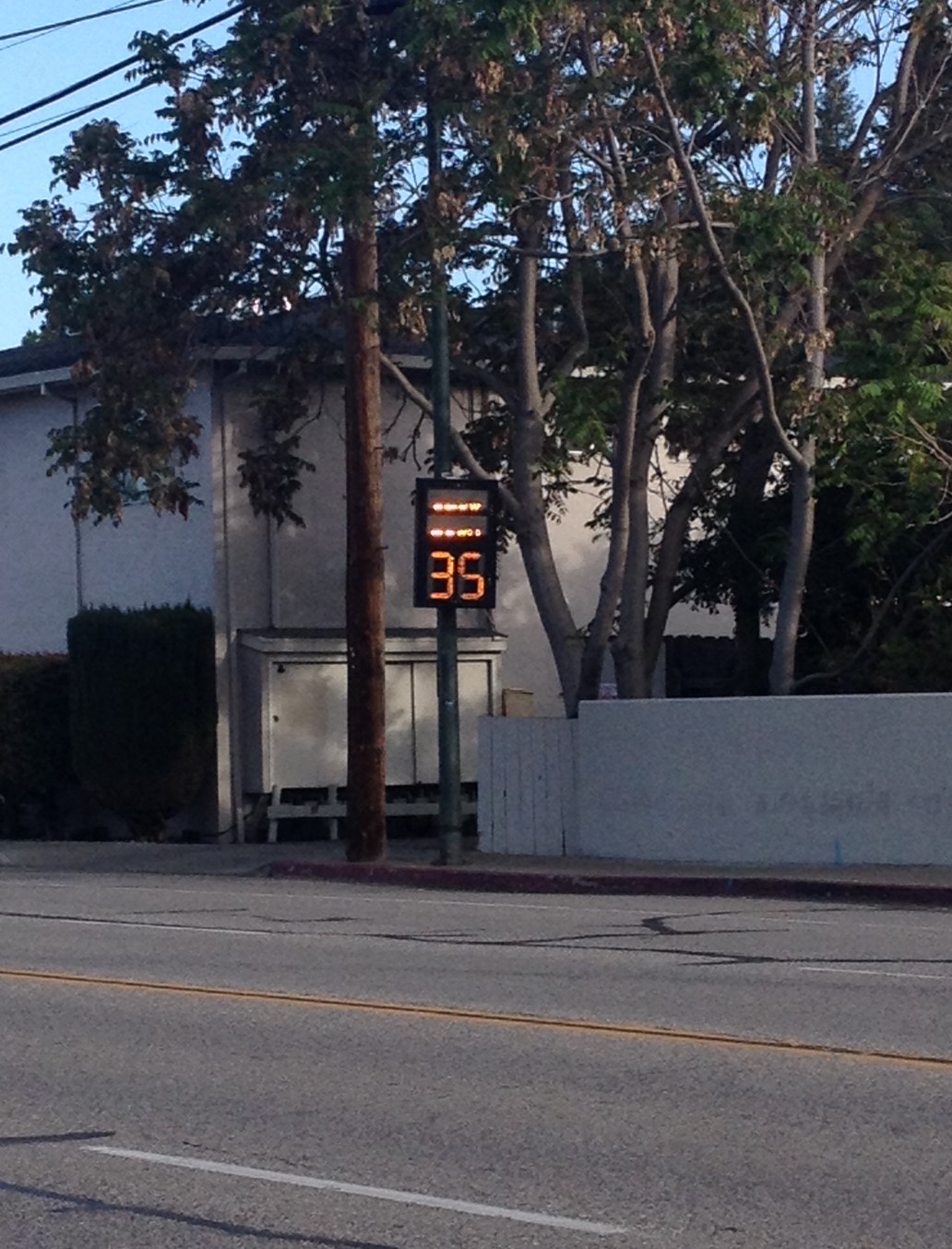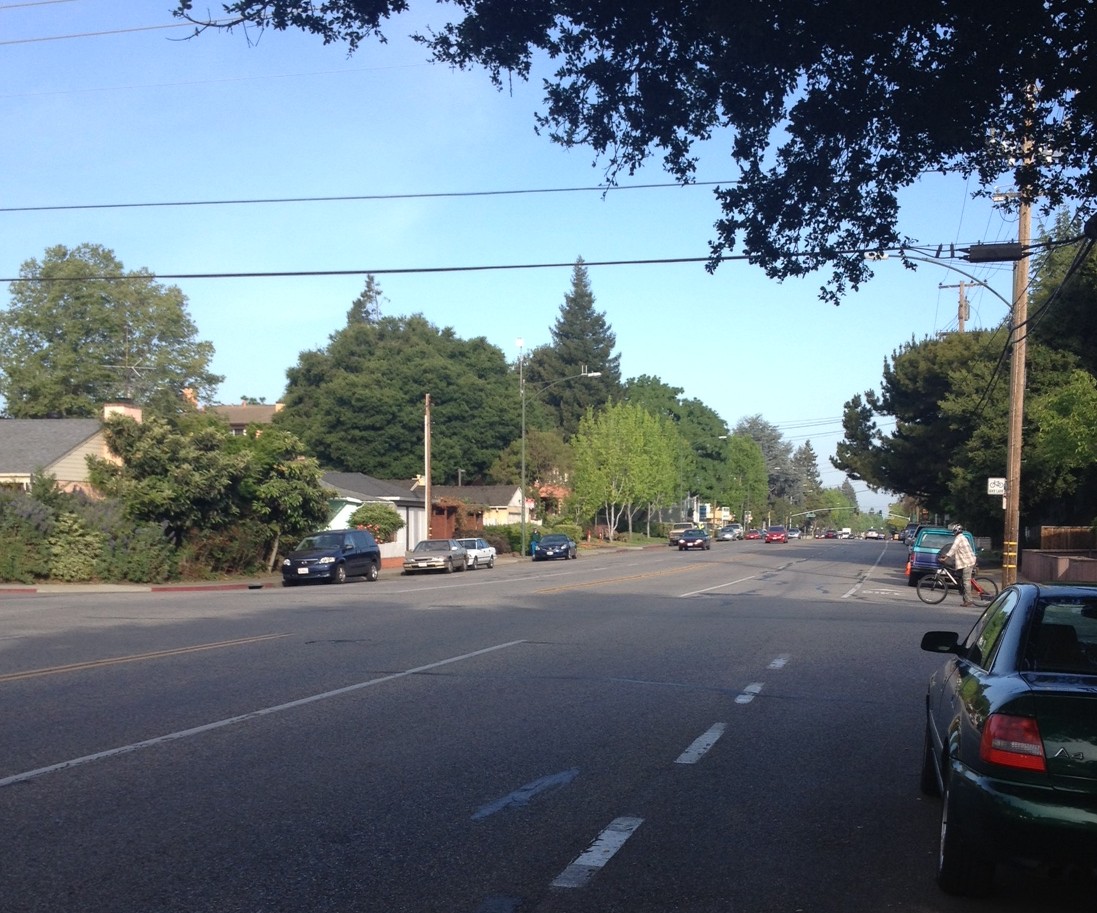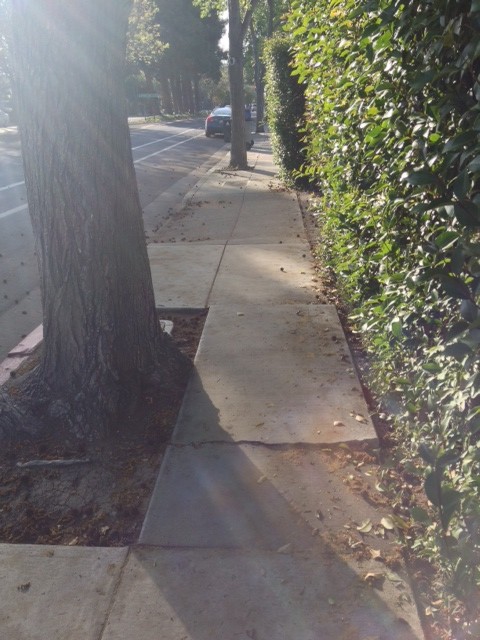Overview
How can we make California Street safer?
How will traffic calming on California Street affect driving?
What can you do to help?
More about California Street
Overview
California Street bisects the highest density area of Mountain View. The close proximity of schools, parks, public facilities, shopping and transit in the area means residents walk and bike as part of their everyday lives.
But crossing and walking along California Street can be hazardous. The narrow and unprotected sidewalks are unwelcoming to pedestrians. Motorists often travel too fast to notice or yield to pedestrians and cyclists. And tragically, three pedestrians have been killed on California Street just since 2010.
How can we make California Street safer?
To create a safer environment for pedestrians, cyclists, and transit riders, California Street must be redesigned to reduce vehicle speeds. Police enforcement and citizen education are not sufficient. Vehicles regularly exceed the posted speed limit of 35 miles per hour. (Under California law, the speed limit cannot currently be reduced because the “design speed” — the speed motorists naturally travel due to the visual cues of the street — is 35 miles per hour.)
?? Is this correct? This is a confusing point. ??
Great Streets Mountain View is advocating for traffic calming measures to reduce the design speed limit of California Street from 35 to 30 miles per hour. ?? Does this mean we are also advocating that the actual speed limit be changed (with new speed limit signs) ??
This will not only create a more welcoming environment for pedestrians, cyclists and transit riders, but will also contribute to a safer, more livable, environmentally sustainable, and socially cohesive community.
There are several measures that could reduce the design speed and calm traffic. They include: narrowing or removing vehicle lanes, increased areas for bicyclists ?? What does this mean exactly ??, additional crosswalks, curb bulbs to reduce the crossing width for pedestrians and make them more visible to motorists, and better landscaping, lighting and signage.
In 2012, the Mountain View City Council authorized a study of California Street and Escuela Avenue. This study will focus on improvements to the bicyclist and pedestrian environment across and along California Street, and will consider these traffic calming measures. The study, which will be led by urban design consultants Nelson / Nygaard, is expected to begin in the fall of 2014, and the process will include opportunities for the public to make suggestions and requests.
How will traffic calming on California Street affect driving?
Traffic calming will make driving a safer and more pleasant experience. Currently, California Street’s excessive width and long sight-lines give the illusion that one can drive faster than the speed limit. Speeding vehicles get caught behind slower ones, creating dangerous conditions and causing traffic build-up and longer wait times at intersections. Traffic calming will strongly encourage all drivers to travel at the same speed of 30 miles per hour, creating smoother, less dense traffic flow.
How can you help?
Getting safety improvements on California Street will require effort by concerned citizens to voice their opinions to city leaders and decision-makers. There are many ways you can help: write emails to city leaders, attend and speak at meetings, sign online petitions, participate in or help plan events. You can also learn more about traffic calming, street design, city government and advocacy. For all this and more, please stay connected to Great Streets Mountain View:
- Sign up for our Newsletter
- Like us on Facebook
- Follow us on Twitter
- Tell us how you’d like to be involved
- Let us know your thoughts and suggestions. Send email to contactus@greatstreetsmv.org.
More about California Street
Current conditions:
Injuries and deaths:
Since 2010, three pedestrians have been killed on California Street — all between Castro Street and Escuela Avenue. This section of California Street has narrow sidewalks and lacks a physical buffer, such as a planting strip, to protect people from fast-moving automobile traffic.
Public places:
There are many public spaces and everyday destinations very close to the densely populated neighborhoods around California Street. These include two schools; several public parks; the Senior Center, Teen Center and Day Worker Center; produce markets and drug stores; two transit centers; and shopping on El Camino Real, Castro Street, and the San Antonio Center. Residents frequently travel along or cross California Street on bike or foot.
Census Demographics:
- Residents of the four Census Tracts flanking California Street make up 26% of Mountain View’s population. Source: www.usa.com
- 27% of residents along the California street corridor commute to work without an automobile (walk, bike, take public transit, or work from home) compared to 19% of Mountain View residents overall. Source: www.usa.com
- Census Tract 509493 (orange on the map), is bounded by El Camino Real, Central Expressway, Rengstorff Avenue and Escuela Avenue. It includes a large park as well as the Senior Center and Teen Center, yet is still the densest tract in Mountain View and the third densest in all of Santa Clara County. Source: www. usa.com
- Census Tract 509493 (orange on the map) has the highest concentration of Hispanic residents (50% vs. 22% in Mountain View overall) and the second lowest median household income ($57,000 vs. $93,000 in Mountain View overall). Source: www.usa.com
- 43% of households in Census Tracts 509493 and 509404 (orange and blue on the map) speak English at home vs. 55% of all households in Mountain View. Source: www.usa.com
